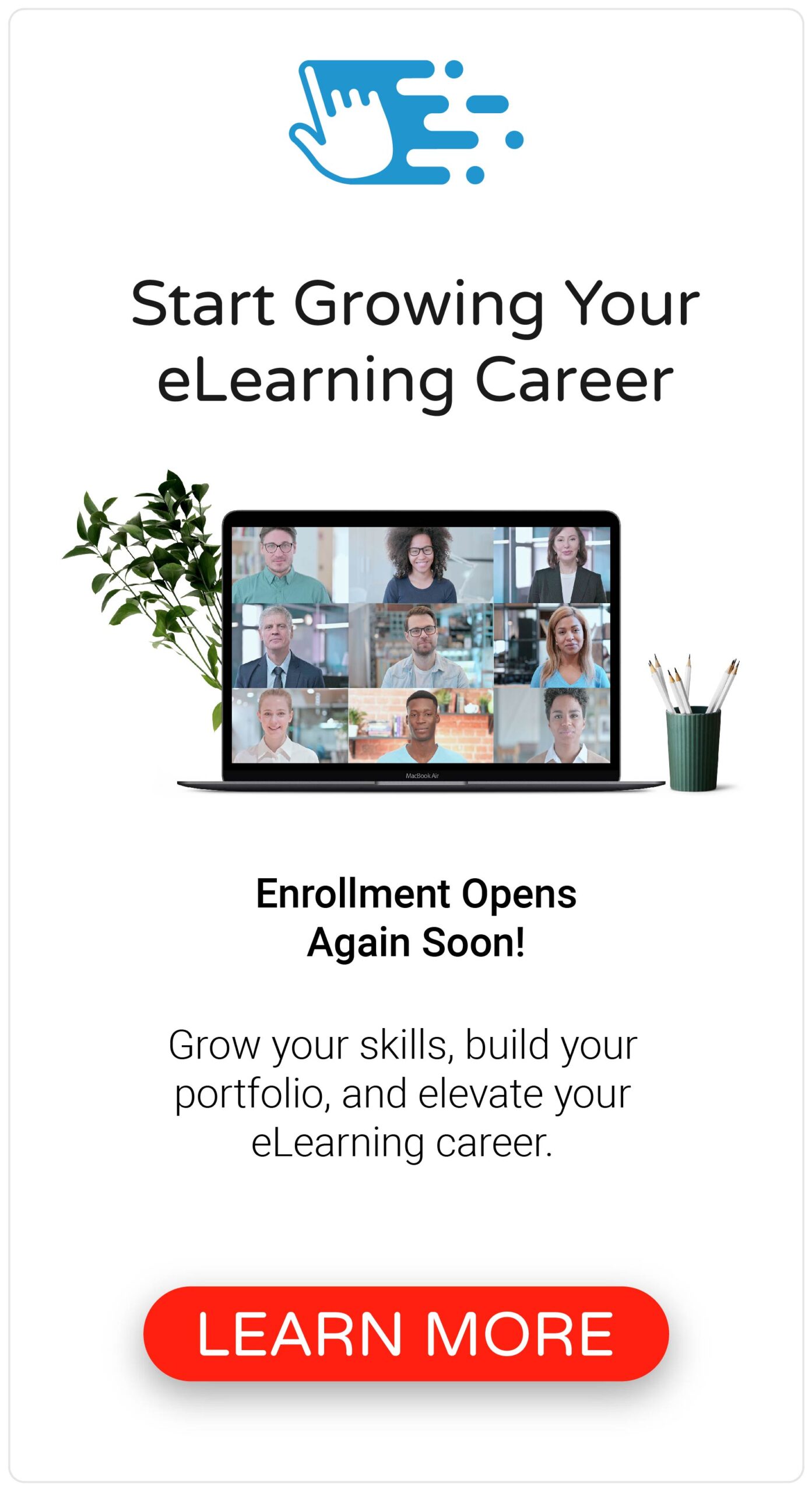Whenever I’m at a conference, at work, or online, I often find myself interacting with folks with many misconceptions about eLearning. Usually, these misconceptions “show” themselves when someone tries to explain why eLearning isn’t effective or when someone has a very narrow idea of what eLearning should look like.
The truth is these misconceptions about eLearning stem from an individual’s inexperience or fear of eLearning. And frankly, I don’t blame these folks for having these misconceptions. They’ve likely experienced eLearning that truly is bad, ineffective, or misused. And it’s these negative experiences that have shaped their misconceptions about eLearning.
Here are three common misconceptions about eLearning that most people get wrong.
eLearning Replaces the Classroom

Perhaps the most common misconception about eLearning is the idea that it replaces the need for the classroom and even the instructor. I believe this misconception stems from the insecurity some (not all) classroom facilitators have about their position in the learning process. As much as I believe the classroom has its place within the learning ecosystem, some (not all) facilitators believe that if the content isn’t delivered from their mouths and into the ears of the learners sitting in front of them, then learning isn’t occurring.
Learning isn’t a singular event that happens while seated in a classroom or behind the screen of an eLearning course.
The truth is, eLearning, like classroom facilitation, is just one learning modality amongst many. Learning isn’t a singular event that happens while seated in a classroom or behind the screen of an eLearning course. Learning is a process that occurs through multiple events, where learners obtain knowledge, apply that knowledge, and master a skill. This can happen in the classroom, in an eLearning course, with a job aid, while watching a video, having a discussion, or practicing on the job.
eLearning Must Be Interactive to Be Effective

eLearning comes in many different shapes and sizes. And when most people think of eLearning, they think of something that has been developed in a tool like Articulate Storyline or Adobe Captivate. While these programs offer the ability to create highly-interactive eLearning content, many folks believe it must be interactive to be effective.
Interactivity should be able to help your learners practice a skill. Never include interactivity for the sake of interactivity.
The truth is, there isn’t (at least there shouldn’t be) and single rule for when a course should or shouldn’t be interactive. Interactivity should be included if it can help the learner better understand, apply, and master the skill being taught. If the skill being taught doesn’t require application or isn’t best practiced in a digital interaction, then interactivity should not be included for the sake of interactivity.
This misconception about eLearning is the result of folks having a narrow view of what eLearning looks and feels like. If you take the term “eLearning” literally, it means any learning that is electronic or digital. If you think of eLearning as digital learning, it opens the possibilities to a lot of different types of content. Videos, interactive documents, webinars, podcasts, online discussions, or interactive performance support tools are all examples of digital learning, also known as eLearning.
People Hate eLearning

I have to be honest; I’ve never understood this one. To me, saying you hate eLearning is like saying you hate the internet. I don’t know about you, but when I need a reminder on cooking rice, I don’t pull out a big old cookbook or sign up for a class. So, what do I do? I find a quick, two-minute video on YouTube. Now, if you take what I explained in point number two, an online video constitutes eLearning.
The truth is, people don’t hate eLearning; people hate bad eLearning.
The truth is, people don’t hate eLearning; people hate bad eLearning. So, what is bad eLearning? Bad eLearning is eLearning that is poorly designed, isn’t fit for function, and doesn’t effectively fulfill the desired learning need. eLearning is good when it’s designed well and used when it’s most appropriate.
The Bottom Line
While there are many different misconceptions about eLearning, most of them can be debunked with a little extra explaination. As I mentioned, many of these misconceptions stem from a misunderstanding about what eLearning really is and how it can be best utilized in the learning process.
What other misconceptions about eLearning have you experienced? Share them by commenting below!








Thanks Tim:) I had the misconception that e-learning needs to be interactive for it to be defined as e-learning! I am happy with this broader definition though as I was struggling where to put instructional videos in my previous definition. Thanks for clarifying.
One I hear all the time is that the Liberal Arts cannot be taught well as e-learning courses – but I think this is a mistake. I even took piano lessons through an online, interactive digital piano lesson. I even look at things like stories or poetry – an what you can do digitally as a group that you could never do live.
True – there is so substitute for a live conversation over big topics, and that is hard. Synchronous online discussion is really cluncky – but asynchronous works. Maybe even better sometimes.
That’s an interesting one! I’ve never heard that before! Thanks for sharing, Geniphyr! I totally agree with you!